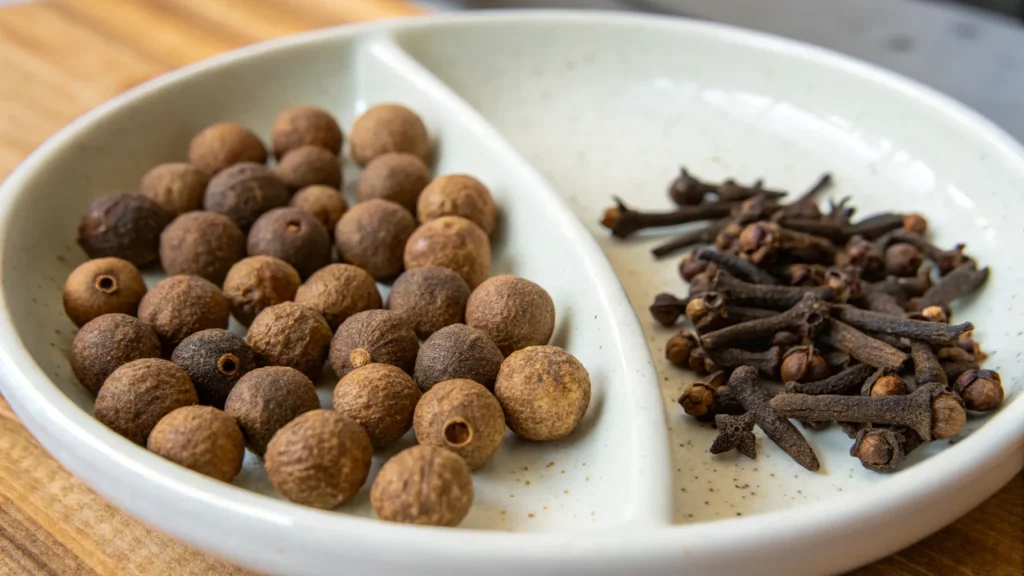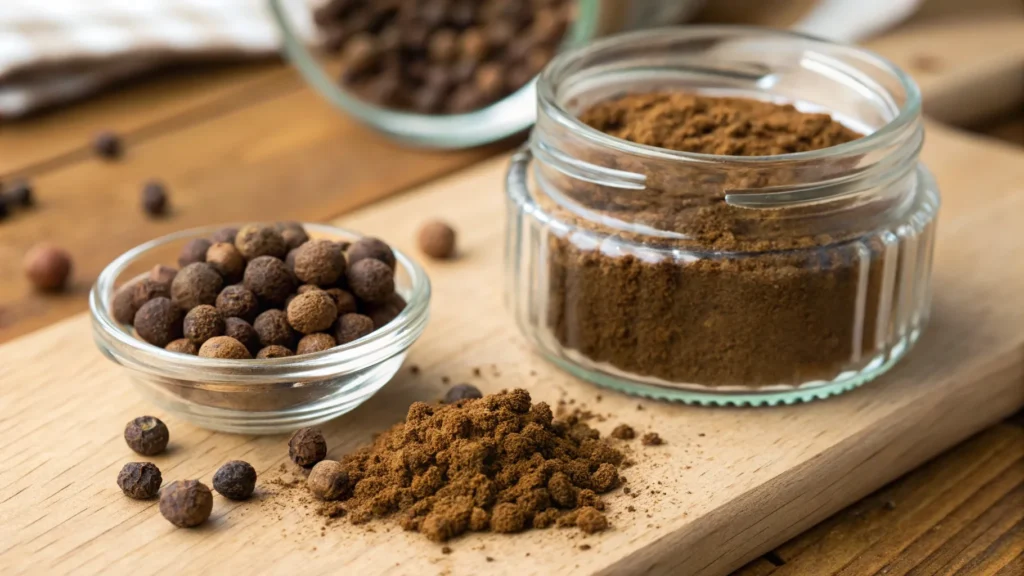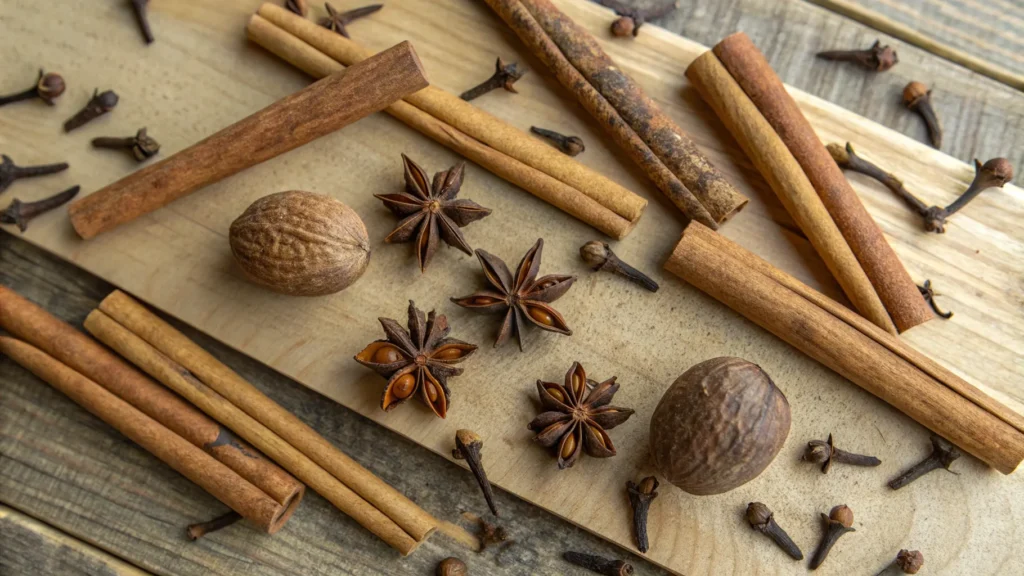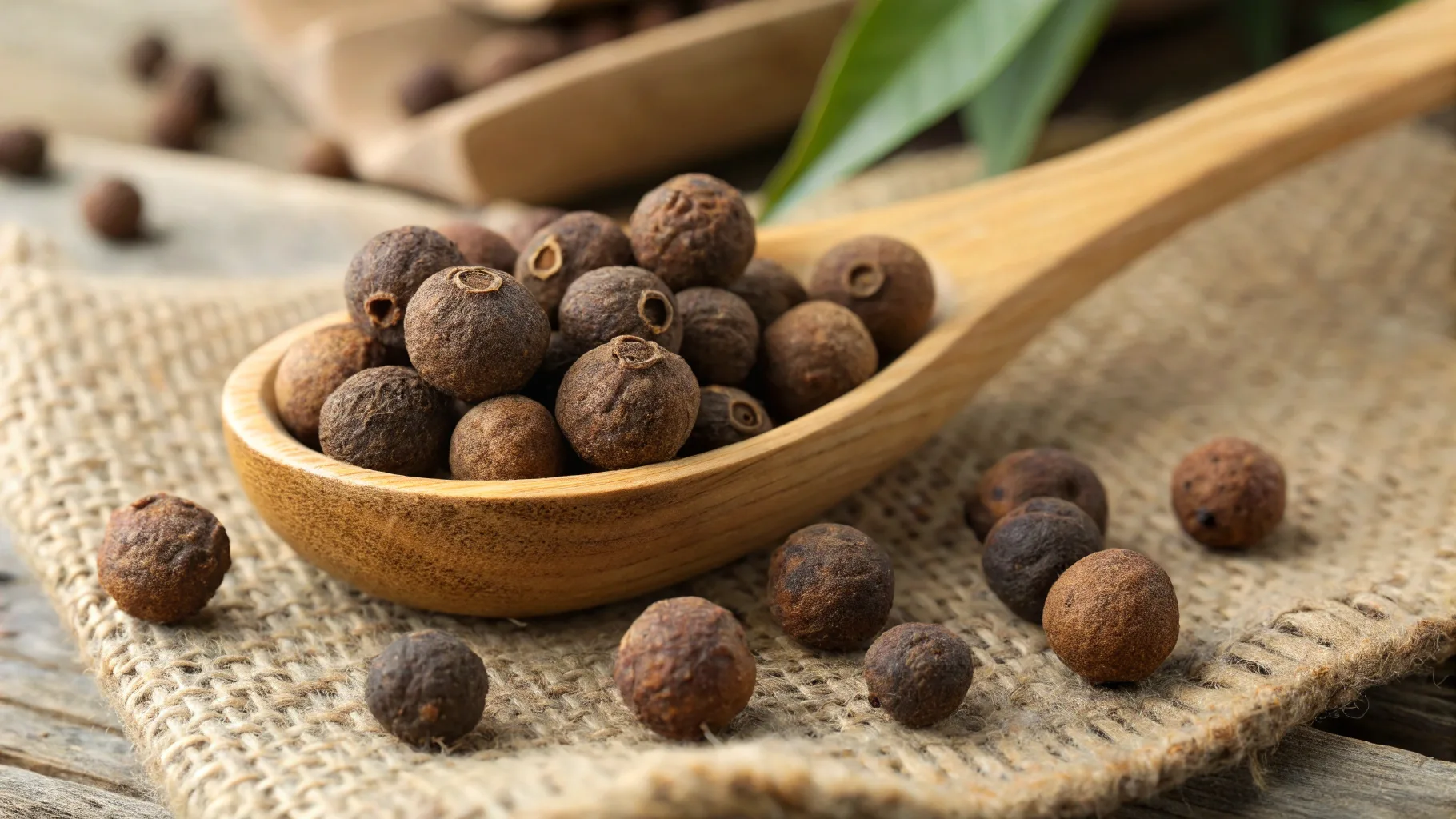Is Whole Allspice the Same as Pimento Seeds? Allspice is a versatile spice used in various cuisines worldwide, but many people wonder whether whole allspice is the same as pimento seeds. The confusion arises due to different regional names and culinary applications. In this article, we will explore the differences and similarities between whole allspice and pimento seeds, their uses, and the best substitutes.
Table of Contents
Understanding Whole Allspice and Pimento Seeds
What is Whole Allspice?
Whole allspice refers to the dried, unripe berries of the Pimenta dioica tree, native to the Caribbean, Central America, and parts of South America. The spice gets its name because its flavor resembles a blend of cinnamon, cloves, and nutmeg, making it a versatile ingredient in both savory and sweet dishes. Whole allspice is often used in marinades, stews, spice blends, and even pickling due to its warm and slightly peppery taste.
What are Pimento Seeds?
Pimento seeds are simply another name for whole allspice berries. In some regions, especially in the Caribbean, allspice is commonly referred to as “pimento”, which can sometimes cause confusion. This is because the Spanish explorers who discovered it mistakenly associated its aroma with black pepper, naming it “pimienta,” the Spanish word for pepper. However, pimento seeds should not be confused with the red pimento peppers used in stuffed olives.
Both whole allspice and pimento seeds come from the same plant and are identical in flavor, aroma, and culinary use. Whether you see them labeled as allspice or pimento seeds in stores, they are the same spice with different regional names.
Is Allspice Pimento the Same as Allspice?

Terminology Confusion
Yes, allspice pimento is the same as allspice. The confusion comes from the various names used for the spice in different regions. The term “pimento” is commonly used in the Caribbean and some parts of Latin America to refer to allspice berries. In contrast, “allspice” is the more widely recognized name in North America and Europe.
Adding to the confusion, the word “pimento” is also used for a type of sweet red pepper, commonly found in stuffed olives. However, pimento seeds (allspice berries) have no relation to red pimento peppers—they come from completely different plants.
Culinary and Regional Differences
Despite the name variations, allspice and pimento seeds are the exact same spice, used in both sweet and savory dishes. In Jamaican cuisine, allspice (pimento) is a key ingredient in jerk seasoning, giving it its signature warm, slightly peppery flavor. Meanwhile, in European cooking, it is commonly found in spice blends like pumpkin spice and mulled wine mixtures.
Regardless of what it’s called—allspice, pimento, or Jamaican pepper—it remains one of the most versatile spices in global cuisine.
What is Pimento Seeds Also Called?
Different Names Around the World
Pimento seeds, also known as allspice berries, go by several names depending on the region. In the Caribbean and Latin America, they are commonly referred to as pimento or pimienta de Jamaica, meaning “Jamaican pepper.” In North America and Europe, the spice is widely recognized as allspice due to its complex flavor that mimics a combination of cinnamon, cloves, and nutmeg.
Other names for pimento seeds include:
- Jamaican pepper – Used in some regions due to its origin in Jamaica, one of the largest producers of allspice.
- Myrtle pepper – A less common name based on its botanical family, Myrtaceae.
- New spice – An old-fashioned term used in historical spice trade references.
Scientific and Botanical Names
The scientific name of the allspice plant is Pimenta dioica. This botanical classification helps distinguish it from actual peppers (Capsicum species) and other unrelated spices. Despite the name pimento, these seeds are unrelated to red pimento peppers, which are a variety of Capsicum annuum.
No matter what name it goes by, pimento seeds and allspice are the same spice, offering a unique and versatile flavor in cooking.
What is the Closest Spice to Allspice?

Best Substitutes for Allspice
If you don’t have allspice (pimento seeds) on hand, you can use a blend of other spices to replicate its warm, slightly peppery flavor. The best substitutes include:
- Cinnamon, Cloves, and Nutmeg (1:1:1 ratio) – Since allspice naturally tastes like a combination of these three spices, mixing them in equal parts is the best alternative.
- Ground Cloves – Cloves have the strongest similarity to allspice, though they are more intense and slightly sweeter. Use half the amount of ground cloves compared to allspice to avoid overpowering the dish.
- Cinnamon and Nutmeg (1:1 ratio) – This blend provides warmth and depth, though it lacks the peppery note of allspice.
Homemade Allspice Blend
To make a homemade allspice substitute, combine:
- 1 teaspoon ground cinnamon
- ½ teaspoon ground cloves
- ½ teaspoon ground nutmeg
Mix well and use as a 1:1 replacement for ground allspice in recipes. While this blend won’t fully replicate the unique complexity of allspice, it works well in baking, seasoning blends, and stews.
Are Pimento Seeds and Cloves the Same?
Flavor Comparison
Pimento seeds (allspice) and cloves may have some similar flavor notes, but they are not the same spice. Allspice (pimento seeds) has a complex taste that combines hints of cinnamon, nutmeg, and cloves, making it a versatile seasoning. Cloves, on the other hand, have a much stronger and more pungent flavor with a slightly sweet and bitter taste.
While both spices are warm and aromatic, cloves have a more intense spiciness, whereas allspice offers a more balanced and milder warmth. Because of this, using cloves as a substitute for allspice should be done in smaller quantities to avoid overpowering a dish.
Culinary Uses of Each Spice
Both pimento seeds (allspice) and cloves are used in sweet and savory dishes, but they have different applications:
- Pimento seeds (allspice) are commonly used in Jamaican jerk seasoning, stews, pickling, and baking.
- Cloves are often used in mulled drinks, spice blends, baked goods, and Indian or Middle Eastern cuisine.
Although they share some similarities, cloves cannot fully replace allspice, and vice versa. However, in some cases, cloves combined with cinnamon and nutmeg can mimic the flavor of allspice.
Uses and Benefits of Whole Allspice (Pimento Seeds)

Cooking and Baking Applications
Whole allspice (pimento seeds) is a staple ingredient in many global cuisines. It is commonly used in:
- Jamaican Cuisine: Essential in jerk seasoning, giving jerk chicken and pork their signature warm, slightly peppery flavor.
- Pickling and Marinades: Whole allspice is often added to brines for pickles, corned beef, and fish for a rich, aromatic taste.
- Baking and Desserts: Used in pumpkin pie spice, gingerbread, and fruitcakes, allspice enhances the depth of sweet treats.
- Beverages: Found in mulled wine, spiced teas, and chai, adding warmth and complexity.
Medicinal and Health Benefits
Beyond the kitchen, allspice has been used in traditional medicine for centuries due to its antioxidant, anti-inflammatory, and digestive properties. Some notable health benefits include:
- Aids Digestion: Allspice has carminative properties that help reduce bloating, gas, and indigestion.
- Rich in Antioxidants: Helps combat oxidative stress and supports immune health.
- Pain Relief: Contains eugenol, a natural compound also found in cloves, which has mild anesthetic properties for toothaches and sore muscles.
With its culinary versatility and medicinal benefits, whole allspice (pimento seeds) is a valuable addition to any spice rack.
How to Store and Preserve Allspice (Pimento Seeds)
Proper Storage Techniques
To maintain the freshness and potency of whole allspice (pimento seeds), proper storage is essential. Follow these tips to keep your allspice flavorful for longer:
- Use an Airtight Container: Store whole allspice in a glass jar with a tight-fitting lid to prevent exposure to air, which can cause it to lose its aroma and flavor.
- Keep Away from Heat and Light: Store the jar in a cool, dark place such as a pantry or spice cabinet, away from direct sunlight, heat, and humidity.
- Avoid Moisture Exposure: Always use a dry spoon when handling ground allspice to prevent clumping and spoilage.
Shelf Life and Freshness Tips
- Whole Allspice: Can last 3-4 years if stored properly, as whole berries retain their flavor longer.
- Ground Allspice: Best used within 6-12 months, as it loses its potency faster than whole berries.
- Test for Freshness: Crush a few pimento seeds and check for a strong, warm aroma. If the scent is weak, it’s time to replace them.
Proper storage ensures your allspice stays fresh and flavorful for years, making it a long-lasting spice in your kitchen.
Buying Guide – Choosing the Best Allspice or Pimento Seeds
Whole vs. Ground Allspice – Which is Better?
When shopping for allspice (pimento seeds), you’ll find both whole berries and ground allspice. Each has its advantages:
- Whole Allspice (Pimento Seeds) – Retains flavor longer and is ideal for stews, marinades, and pickling. You can grind it fresh as needed for a more potent taste.
- Ground Allspice – Convenient for baking and spice blends, but loses its aroma and potency faster than whole berries.
For best flavor and longevity, whole allspice is recommended, and you can grind it as needed using a spice grinder or mortar and pestle.
Where to Buy Authentic Allspice (Pimento Seeds)?
To get high-quality allspice, consider these purchasing options:
- Local Grocery Stores: Found in the spice aisle, but may be limited in variety.
- Online Retailers: Websites like Amazon, Spice House, and specialty spice shops offer fresh and organic allspice.
- Ethnic & Caribbean Markets: These stores often carry authentic Jamaican pimento seeds with stronger flavor.
- Farmers’ Markets: Some spice vendors sell freshly harvested and sun-dried allspice berries.
For best quality, look for whole, dark brown berries with a strong aroma, ensuring maximum freshness.
FAQs – Answering Common Questions About Allspice and Pimento Seeds
Is allspice pimento the same as allspice?
Yes, allspice pimento is the same as allspice. The term “pimento” is commonly used in the Caribbean and Latin America to refer to allspice berries, while “allspice” is the widely recognized name in North America and Europe. Despite the different names, they come from the same Pimenta dioica tree and share the same flavor and culinary uses.
What is pimento seeds also called?
Pimento seeds are also known as allspice berries, Jamaican pepper, or myrtle pepper. In Spanish, they are called pimienta de Jamaica, and in some historical texts, they have been referred to as new spice due to their unique combination of flavors resembling cinnamon, nutmeg, and cloves.
What is the closest spice to allspice?
The best substitute for allspice is a blend of cinnamon, cloves, and nutmeg in equal parts. Cloves alone can also work, but they have a stronger, more intense flavor.
Are pimento seeds and cloves the same?
No, pimento seeds (allspice) and cloves are not the same. While they share similar warm and spicy notes, allspice has a milder, more balanced flavor, whereas cloves are much stronger and slightly sweet with a pungent aroma.
Conclusion
Whole allspice and pimento seeds are the same spice, offering a rich, warm flavor used in various global cuisines. Despite the name confusion, both come from the Pimenta dioica tree and are essential in Caribbean, Middle Eastern, and European cooking.
Whether you use whole or ground allspice, it enhances dishes with notes of cinnamon, nutmeg, and cloves. If you run out, a blend of these spices works as a substitute.
For best quality, buy fresh, whole berries and store them properly to preserve their flavor. Now that you know the difference, how will you use allspice in your next dish?
Discover more healthy meal inspirations with our Air Fryer Salmon Guide.
There are beautiful things on our Facebook page. Eminent Recipes
My Facebook Eminent Recipes

